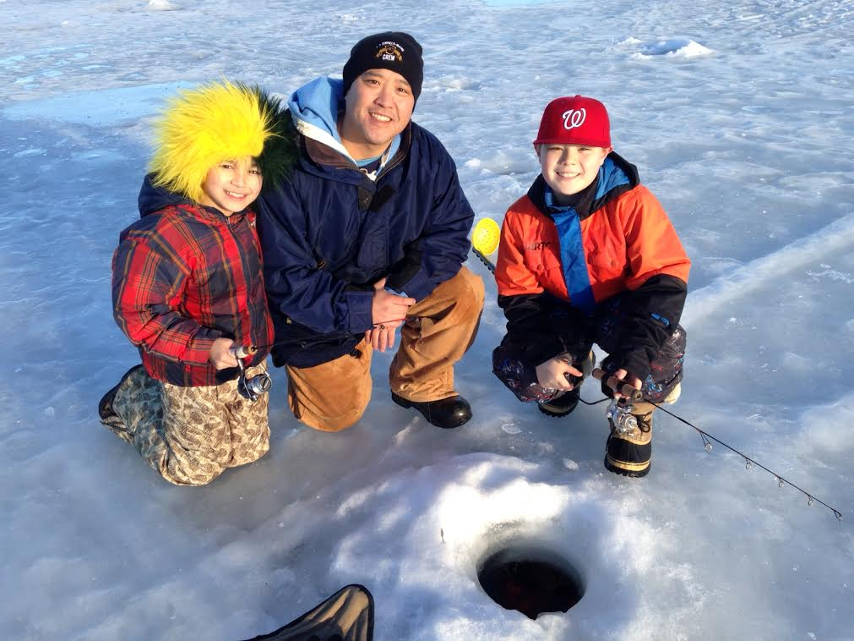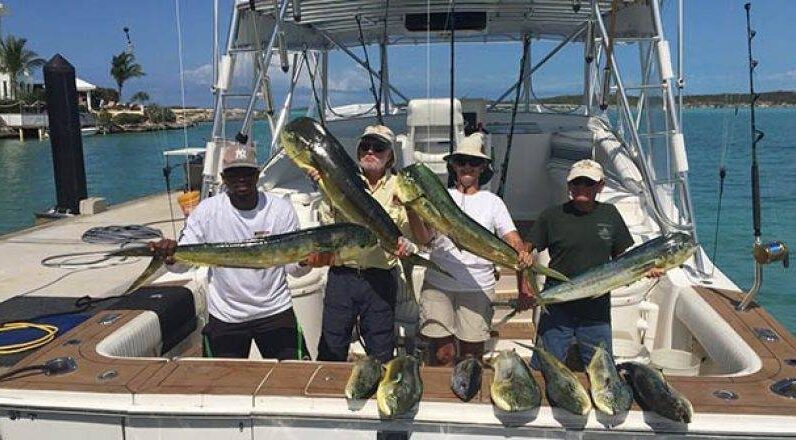Fishing on Alaska’s frozen waters is a unique and thrilling experience, providing anglers with the opportunity to catch a variety of fish species. From the best areas to fish to the best techniques to use, this comprehensive guide will cover everything you need to know to make the most of your ice-fishing adventure in Alaska.
We’ll also explore the top spots to stay, the best times to fish, and the essential gear and safety precautions you’ll need to take.
Short Summary
Prime Fishing Spots: Explore Alaska’s top ice fishing destinations like Beach, Jewel, Birch Lake, Quartz Lake, Matanuska Lakes Recreation Area, and Nancy Lake State Recreation Area for diverse fish species and serene surroundings.
Effective Fishing Techniques: Learn essential techniques for successful ice fishing, including jigging, tip-ups, and using sonar or fish finders to increase your chances of landing a prized catch.
Discover the top spots to stay during your ice fishing adventure, ensuring a comfortable and convenient base near the frozen lakes.
Optimal Fishing Time: Gain insights into the best times to fish in Alaska’s frozen lakes.
Best Species Found in Alaska
Alaska boasts a variety of top fish species. Here are some of the most popular ones you can find in the state:
- King Salmon
- Silver Salmon
- Arctic Grayling
- Dolly Varden
- Rainbow Trout
- Kenai River
- Susitna River
- Northern Pike
- Burbot
- Arctic Char
- Lake Trout
- Northern pike
- Lake whitefish
Best Fishing Spot for Ice Fishing in Alaska
1. Anchorage Area
Anchorage is the best place to start your ice fishing adventure. Anchorage includes Jewel, Mirror, Beach, Clunie, Otter, DeLong, Sand, Goose, and Green Lake in the Southcentral area. As the season ends here in late March, be aware of the thin ice after spring.
2. Fairbanks
Fairbanks is located in Alaska’s interior and experienced a significant temperature drop by late October. It has many frozen lakes, including Chena, Polaris, Ballaine, Moose, Grayling, and 28 Mile Pond. The ice fishing season starts around late November and peaks in excellence until mid-January.
3. Matanuska-Susitna Area
The Matanuska-Susitna Valley in Alaska, also known as the “Stillwater Fishing Capital of Alaska,” is a prime destination for winter anglers. With over 80 lakes annually stocked with landlocked salmon, Arctic char, Arctic grayling, and rainbow trout, it offers abundant opportunities for ice fishing.
4. Kenai Peninsula Area
Kenai Peninsula also offers many opportunities for fishing enthusiasts. Popular lakes in this area include Trail, Kenai, Hidden and Skilak, Swanson River Road Lakes, Swan Lake Road, and Canoe System Lakes.
5. Glennallen & Copper Valley
Glennallen & Copper Valley offer lots of beautiful lakes for ice fishing, like Louise/Susitna, Crosswind, Deep, Fish, Tolsona, Paxton, Summit, Tonsina, Strelna, Silver, Van, Copper-Tanada, and Long lakes.
6. Tanana Valley
Famous lakes include in this area:
- Tangle
- Minto
- Harding
- Birch
- Quartz
- Geskakmina
- Dune
- Otto
- Rainbow
- Craig, Koole
- Tetlin lakes
7. Northwest Area
The Northwest Area offers a lot of fishing opportunities, including:
- Walker
- Wild and Selawik Lakes
- Hotham Inlet
What Do You Need for Ice Fishing in Alaska
Must have:
Ice Auger: To drill holes through the ice, allowing access to the water below.
Ice Fishing Rod and Reel: choose a stout rod to ensure a good hook set and to maintain pressure on the fish, along with strong hooks.
Ice Fishing Line: Use specialized low-temperature lines that remain flexible in freezing conditions. Also, make sure the lines are heavy, preferably more than 20 pounds.
Bait and Lures: Select bait or lures that appeal to the fish species you’re targeting. Common choices include minnows, maggots, or artificial jigs.
Ice Scoop or Skimmer: To remove ice shavings and keep the hole clear for fishing.
Safety essentials: Don’t forget a first-aid kit, ice cleats (to prevent slipping), and a life jacket.
Warm Clothing: Dress in layers with insulated, waterproof clothing, including insulated boots, gloves, and a hat, to stay warm in sub-zero temperatures.
Optional Extras:
Portable Heater: Optional but highly recommended for staying warm during extended fishing sessions.
Ice Cleats: Attachable to your boots for better traction on icy surfaces.
Thermos of hot drinks and snacks: Stay warm and fueled for the long haul.
Navigation Tools: Carry a map or GPS device to navigate the frozen landscape and locate your chosen fishing spots.
Cooking Equipment: If you plan to cook your catch on-site, bring a portable stove or other cooking equipment.
Best Seasons for Ice Fishing in Alaska
Situated in the northwest corner of North America, Alaska boasts extremely cold and breathtaking natural beauty. Its pristine rivers and stunning coastline create an angler’s dream destination. However, it’s essential to be familiar with Alaska’s fishing seasons before starting an adventure in the “Last Frontier.”
While fishing is possible throughout the year, the harsh Alaskan winter may discourage even the most adventurous anglers. However, for those who can’t resist the urge, there’s ample opportunity for ice fishing.
Alternatively, planning your trip for spring is advisable. This is when the winter starts to loosen its grip, and the waters gradually warm up.
| Species | Peak Season |
| Chinook Salmon | May, June |
| Coho Salmon | June-Oct |
| Sockeye Salmon | Jun, July |
| Pink Salmon | July-Sep |
| Rainbow Trout | April-Oct |
| Dolly Varden | June-Oct |
| Arctic Char | June-Oct |
| Arctic Grayling | May-Oct |
| Halibut | May-Oct |
| Rockfish | Year Round |
| Lingcod | May-Nov |
Techniques Used for Ice Fishing in Alaska

1. Ice Fishing
A technique that involves digging a hole in the ice and dropping a line with bait or lures into the water below. Ice fishing is a widely known winter activity in Alaska, providing a great opportunity to catch a variety of fish, including rainbow trout, silver salmon, Arctic grayling, Arctic char, and lake trout.
2. Jigging
This involves using a vertical motion to move the bait or lure up and down in the water, mimicking the natural movements of prey. Jigging is effective for enticing fish like trout, salmon, and char.
3. Tip-Ups
These are devices with flags that signal when a fish takes the bait. Anglers set up multiple tip-ups, allowing them to cover a larger area and improve their chances of catching fish.
4. Dead Sticking
This method involves placing a baited hook or lure in the water and leaving it stationary. The subtle movement of the bait entices fish, and patience is key with this fishing technique.
Safety First: Ice Fishing Precautions in Alaska
Check Ice Thickness: Always ensure the ice is thick enough. Four inches is generally safe, but for larger groups or equipment, aim for at least six inches.
Use Ice Picks: Carry ice picks in case of an accidental fall. These can help you pull yourself out of the water onto solid ice.
Buddy Up: Never ice fish alone. Always go with a buddy to watch out for each other.
Life Jacket: Wear a life jacket over your winter gear. It adds an extra layer of safety, especially if there’s an unexpected plunge.
Go Slow: The ice can be slippery! Take small steps and avoid jumping or running.
Weather Awareness: Stay updated on weather forecasts. Sudden changes can impact ice conditions.
Ice Conditions: Be cautious near pressure ridges, ice heaves, or dark ice. These areas can be unstable.
Equip Yourself: Carry safety essentials like a first-aid kit, a fully charged cell phone, and a map or GPS device for navigation.
Best Places to Stay in Alaska
1. Kenai Princess Wilderness Lodge
The Princess Wilderness Lodge in Cooper Landing offers a unique and tranquil retreat with rustic-modern rooms, private porches, and wood-burning stoves, providing a cozy and comfortable stay for guests.
The lodge is perched above the majestic Kenai River, offering picturesque views of the turquoise water below.
2. Hotel Captain Cook
The Hotel Captain Cook is located in the heart of downtown Anchorage, Alaska, and offers a luxurious and comfortable stay for guests. This hotel is renowned for its warm Alaskan hospitality and convenient downtown location.
With astonishing views of the surrounding hills and Cook Inlet, guests can enjoy a true taste of the Last Frontier.
3. Pike’s Waterfront Lodge
Pike’s Waterfront Lodge is a comfortable and scenic hotel located in Fairbanks, Alaska. The lodge features comfortable rooms and cabins, many with scenic views of the nearby river.
4. Alaska’s Select Inn Wasilla
located in Wasilla, Alaska’s Select Inn provides a comfortable and welcoming stay for visitors. With easy access to local attractions and the fantastic natural beauty of the surrounding area, this hotel is an ideal choice for travelers exploring the Matanuska-Susitna Valley.
5. Land’s End Resort
Land’s End Resort, located in Homer, Alaska, offers a relaxing and scenic getaway for guests seeking a bayside hotel experience. With breathtaking views of Kachemak Bay and the Kenai Mountains, this resort offers a splendid blend of natural beauty and comfortable accommodations.
How To Get to Alaska from Miami, Florida
Air Travel
If you’re dreaming of going from sunny Miami to the snowy landscapes of Alaska, here’s a simple guide to help you make the journey:
The most efficient and common way to reach Alaska from Miami is by air. Numerous airlines operate flights to major Alaskan cities, including Anchorage, Fairbanks, and Juneau.
Most flights will have layovers, with common connecting airports being Seattle, Denver, or Salt Lake City. Be sure to compare airlines and flight options to find the most easy and cost-effective route for your journey.
Connecting Flights
You can find flight options with connections if you’re open to a layover. Just be aware that this may increase your travel time and could involve extra costs.

In conclusion, ice fishing in Alaska offers a unique and thrilling experience for anglers, providing the opportunity to catch different fish species in the frozen waters of the state.
This comprehensive guide covers everything you need to know to make the most of your ice-fishing adventure in Alaska, including the best areas to fish, essential gear, and safety precautions.
Whether you’re a seasoned ice fisherman or a beginner, Alaska’s stunning natural beauty and abundant fishing opportunities make it the perfect destination for an unforgettable fishing experience.







1 Comment
Comments are closed.